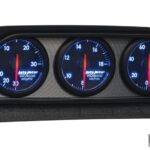I’m encountering some problems with my new BAFX OBD2 scan tool and the Torque Pro app on my 1996 Ford truck. After installing everything, I consistently receive an “ECU Problem” message. The full message states: “The ECU is reporting that it does not support the reading of any PIDs. Your vehicle may not be OBD2 compliant OR the vehicle ECU has not been enabled by your dealer/manufacturer for OBD2 access. Torque will not be able to retrieve information due to this problem).“
Despite this error, the Torque Pro app indicates “connected to ECU OK” at the top of the screen where the gauges are displayed. However, the readings seem largely inaccurate. Only the RPM gauge appears to be providing a correct value.
Here’s a breakdown of the issues I’m seeing with the readings:
- Speed Gauge: Shows a reading approximately 50% higher than my actual speed.
- Coolant Temperature: Stuck at -40F and doesn’t change.
- Boost Gauge: Remains at zero.
Another significant problem is that attempting to scan for fault codes while the truck is running causes it to stall within a couple of seconds. Interestingly, if I perform the fault code scan with the truck off but the key in the ‘on’ position, the scan completes successfully and reports no fault codes in the ECM.
I’ve come across mentions of needing to add “Power Stroke PIDs,” but I haven’t been able to locate this option within the Torque app. It’s possible there’s an existing thread addressing these setup issues for the Torque app and PIDs, but my searches haven’t yielded helpful results so far.
Could anyone offer insights into what I might have configured incorrectly? I’m particularly interested in understanding if this is a Bafx Obd2 Vs ECU compatibility issue with my older truck, or if there are specific settings within Torque Pro I need to adjust to get accurate readings.
Thanks for any assistance!
